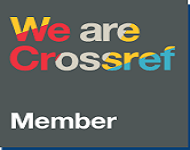Pelatihan Pengurangan Dampak Merkuri bagi Masyarakat Daerah Penambangan Emas Skala Kecil di Desa Sekotong Kabapuaten Lombok Barat
DOI:
https://doi.org/10.33394/jpu.v1i2.3097Keywords:
Training, Gold Processing, Mercury, EnvironmentAbstract
References
Andreoli V, Sprovieri F. (2017). Genetic Aspects of Suceptibility to Mercury Toxicity. Int Journal of Environmental Research and Public Health
Ekawanti A, Krisnayanti BD. (2015). Effect of Mercury Exposure on Renal Function and Hematological Parameters Among Artisanal and Small-Scale Gold Miners at Sekotong, West Lombok, Indonesia, JHP 5(9):25-32
Franko A, Budihna MV, Fikfak MD. (2005). Long term Effects of Elemental Mercury on Renal Function in Miners of Idrija Mercury Mine. Ann Occup Hyg.49(6):521-7
Gunradi R. (2005). Evaluasi Sumber Daya Cadangan Bahan Galian untuk Pertambangan Skala Kecil Daerah Pulau Lombok Provinsi Nusa Tenggara Barat (Pemaparan Hasil Kegiatan Subdit Konservasi. Lombok. ESDM. Available at. psdg.bgl.esdm.go.id › 12-Lombok
Ismawati, Y. (2013). Titik Rawan Merkuri di Indonesia. Situs PESK:Poboyo dan Sekotong di Indonesia. Laporan Kampanye Bebas Merkuri IPEN. Balifokus.
Kolev ST and Bates N. (1996). Mercury. London. UK PID.
Morgan DL, Chanda SM, Price HC, Fernando R, Liu J, Brambila E, O’Connor WR, Beliles RP, Barone S Jr. (2002). Disposition of Inhaled Mercury Vapor in Pregnant Rats: Maternal Toxicity and Effect on Developmental Outcomes. Toxicological Sciences (66):261-273
Ramon R, Murcia M, Aguinagalde X, Amurrio A, Llop S, Ibarluzea, J, Lertxundi A, Martinez-Arguelles B, Ballester F. (2011). Prenatal Mercury Exposure in a Multicenter Cohort Study in Spain. Environment International; 37:597-604.
Subanri. (2008). Kajian Beban Pencemaran Merkuri terhadap Air Sungai Menyuke dan Gangguan Kesehatan pada Penambang sebagai Akibat Penambangan Emas Tanpa Ijin (PETI) di Kecamatan Menyuke Kabupaten Landak Kalimantan Barat. Universitas Diponegoro. Semarang
Veiga MM, Angeloci-Santos G, Meech JA. (2014). Review of Barriers to Reduce Mercury Use in Artisanal Gold Mining, The Extractive Industry and Society (1):351-361
WHO. (2000). Mercury: Air Quality Guidelines. Denmark, WHO Regional Office for Europe
WHO. (2008). Guidance For Identifying Population At Risk From Mercury Exposure. Geneva. UNEP
Downloads
Published
How to Cite
Issue
Section
Citation Check
License
Authors who publish with this journal agree to the following terms:
- Authors retain copyright and grant the journal right of first publication with the work simultaneously licensed under a Creative Commons Attribution License (CC BY-SA 4.0) that allows others to share the work with an acknowledgment of the work's authorship and initial publication in this journal.
- Authors are able to enter into separate, additional contractual arrangements for the non-exclusive distribution of the journal's published version of the work (e.g., post it to an institutional repository or publish it in a book), with an acknowledgment of its initial publication in this journal.
- Authors are permitted and encouraged to post their work online (e.g., in institutional repositories or on their website) prior to and during the submission process, as it can lead to productive exchanges, as well as earlier and greater citation of published work (See The Effect of Open Access).





